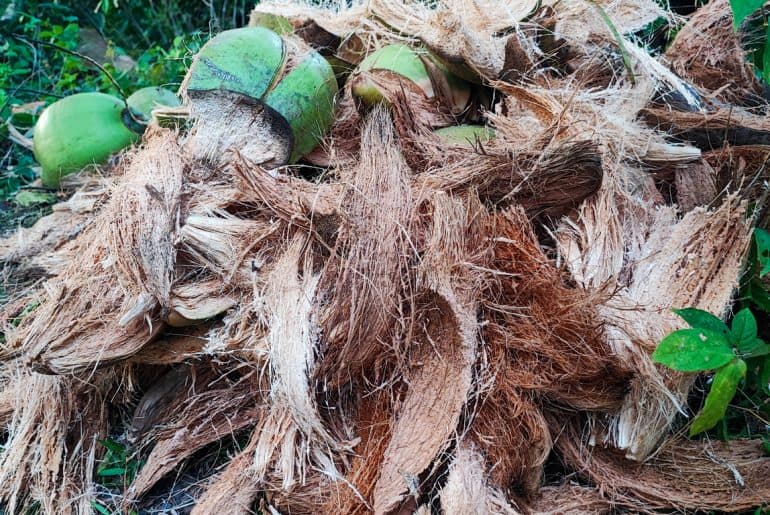Growing your own cannabis at home requires a lot of time, effort, and in some cases, investment. One of the most important things that you will need to invest in when growing cannabis at home is the growing medium.
For those of you who don’t know, the growing medium is what you plant the cannabis seeds into.
This could take the form of soil, coco coir, perlite, vermiculite, expanded clay pebbles, and several others.
There are many different types of growing mediums that can be used to grow cannabis plants. Of course, each of the growing mediums that we are going to discuss below has various advantages and disadvantages that you will need to consider.
What is also worth talking about is that all of the growing mediums here are necessarily mutually exclusive.
For instance, many people may mix in perlite and vermiculite into their soil for added benefits, whereas these are also often used as growing mediums in hydroponics setups.
Today, we want to take a look at the most common growing mediums used for growing cannabis at home, what they entail, and what both their advantages and disadvantages are.
By the end of today’s article, you should have all of the most important information that you need to make an informed decision between the various types of growing mediums used for growing cannabis.
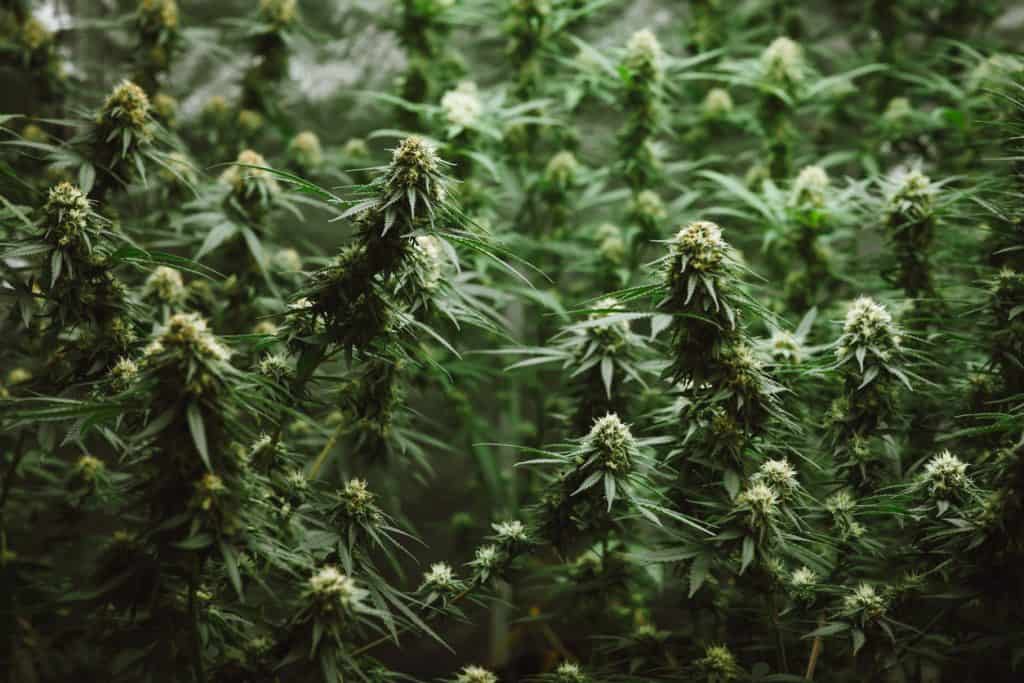
Soil as a Growing Medium
Perhaps one of the most common growing mediums of all when it comes to home cannabis growth is soil.
This is by far the most traditional and most popular growing medium for cannabis, and this is true for both beginners and seasoned experts alike, but with beginners in particular.
There are of course many different types of soil available for use, including specialty cannabis soils, premixed potting soils, and many more.
Using soil for cannabis growth can be beneficial for a wide variety of reasons. Let’s move on and take a look at the advantages and disadvantages of using soil for cannabis growth.
There are many reasons why many consider soil as the best growing medium. let’s find out why.
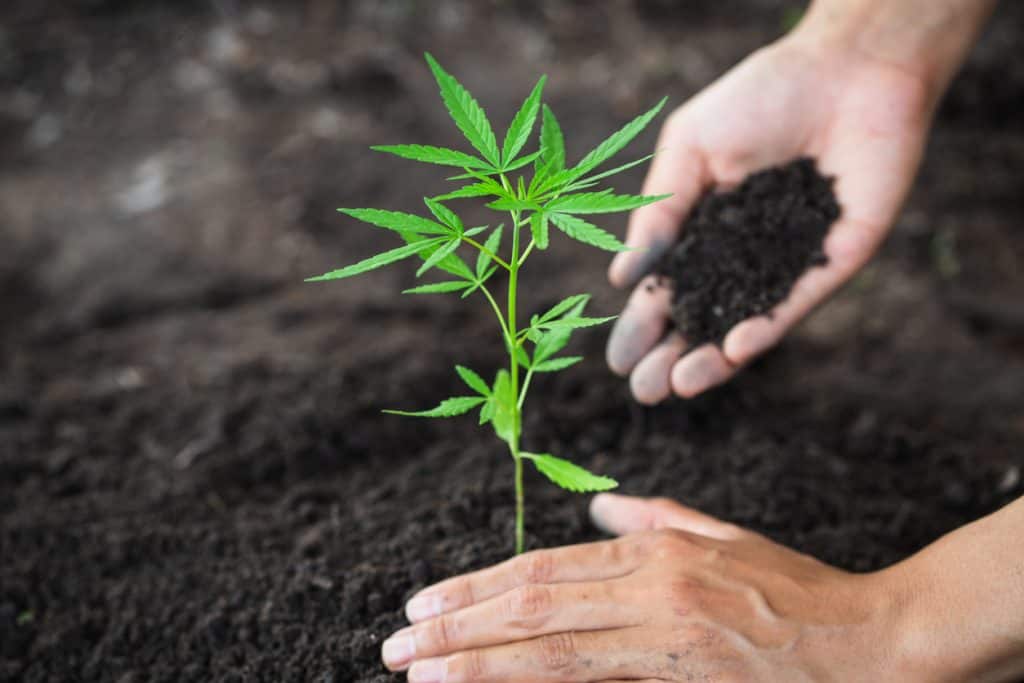
Pros
- Soil is an ideal growing medium for cannabis because it acts as a nutrient buffer. It contains a natural balance of nutrients and microorganisms, which help to provide a buffer against fluctuations and imbalances. This is ideal for protecting a cannabis plant from sudden nutrient shock.
- Many people also prefer using soil because if you have healthy soil, then it is very rich in beneficial microorganisms that can help contribute to nutrient cycling, improved root health, and the decomposition of organic matter. The microbes present in the soil will help to increase the overall ability of your cannabis and to absorb nutrients from the medium.
- It is also thought that using soil as a growing medium is ideal because it produces a much richer aroma and flavor profile when compared to other growing mediums. This is believed to be the result of the interaction between the diverse microbial life in the soil and the plant itself.
- Many people also prefer using soil because it is very familiar, easy to work with, and very widely available, not to mention that also affordable.
- Some people also like using soil as the growing medium because it is seen as being organic and natural.
Cons
- One of the inherent risks of growing cannabis in soil is that some soils have poor drainage. This means that roots can become waterlogged, which ultimately leads to root rot, nutrient lockout, and the death of your plants. If you don’t manage this properly, overwatering your plants can be a serious issue.
- When compared to hydroponics growth systems, soil based growth can be much slower. Soil grown plants have a harder time accessing nutrients through their root systems than hydroponically grown plants do.
- Another issue to consider here is that managing the levels of nutrients can be difficult, and this can be a problem. It’s much easier to manage the nutrients being provided to your plants if you are using a hydroponic system.
- The other issue to consider here is that soil can harbor weed seeds, pathogens, pests, fungus, and much more. This means that your soil needs to be high quality and properly sanitized before you use it. Plants grown in soil require a diligent hand on this front.
Coco Coir to Grow Cannabis
Next, we have coco coir, which is made out of the extremely fibrous husk of the coconut shell.
These coconut husks are fantastic additions to make good cannabis soil, plus it can help hold onto beneficial microbes as well, something that all cannabis growers should be able to appreciate.
This is a very popular growing medium for cannabis, and it is growing in popularity very quickly, with the reason being that it features excellent aeration properties and water retention.
This is often used along with other additives to create a very nutrient rich and balanced substrate. many often consider it the best growing medium addition along with regular soil.
In fact, many people mix coco coir in with their potting soil, as it provides a wide variety of benefits.
Some people may also use it as a hydroponic growing medium, to help suspend the roots and provide the plant with a bit of structure. Let’s take a quick look at the pros and cons of using substance as a growing medium.
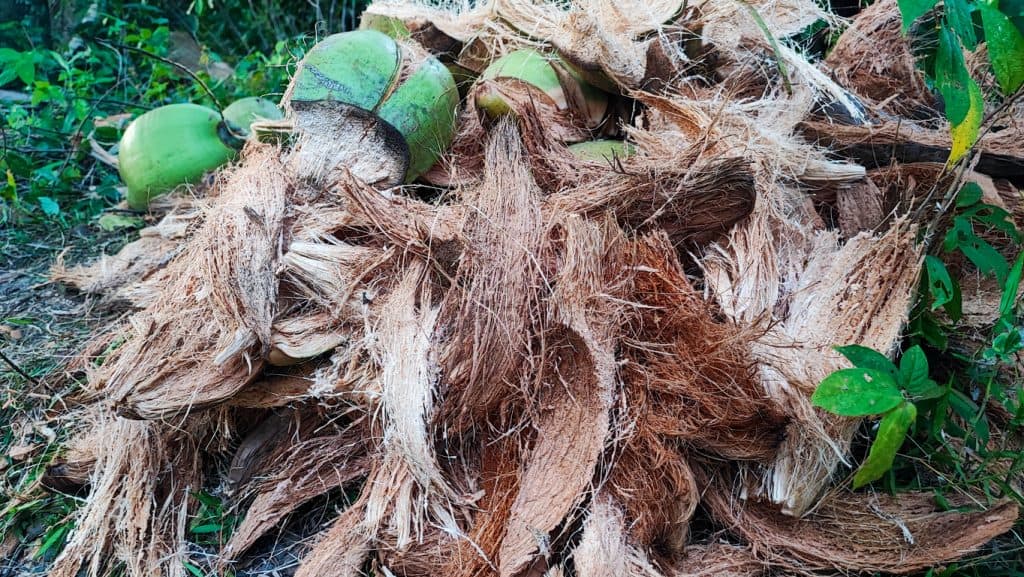
Pros
- One of the biggest benefits of this growing medium is that it features excellent water retention and allows for great drainage. It retains water really well but also allows water to drain away out of the soil. This provides you with a great balance between overwatering and underwatering.
- Coco coir, a super fibrous material, is pH neutral, which means that it will not affect the pH of the nutrient solution or the soil which the cannabis plant is growing in.
- Many people also prefer this as a growing medium quite simply because it is easy to work with and lightweight. It’s practical for both outdoor and indoor use.
- Another big benefit of this substrate or growing medium is that it is very environmentally friendly and renewable, which means that you aren’t hurting the environment nearly as much as with some other substrates. On that note, it is also sustainable and reusable.
- A great benefit that you get with this growing medium is that it has a very porous structure that allows for fantastic oxygenation and aeration of the roots. This in turn promotes a healthy root system, and ultimately allows for fast and healthy cannabis growth.
- Unlike soil, there is a much lower chance for this growing medium to harbor pathogens, pests, fungus, and anything else that may cause damage to your weed plants.
Cons
- Some people may not like this growing medium because it can retain excess nutrients in the beginning, therefore leading to nutrient imbalances.
- Also important to note is that you first need to wash and buffer this medium before use. You need to stabilize the pH levels and remove excess salts, which may require a bit of time.
- Because coco coir has such great drainage capabilities, it requires you to more frequently water your plants than you would otherwise have to. Water may actually run away too quickly.
- On that note, this growing medium is also not the best for holding on to nutrients, especially when compared to other nutrient rich substrates such as soil. This means that you will most likely need to supplement your cannabis plants with increased levels of nutrients.
- The other downside is that the quality of this growing medium can differ greatly from one product to another, so finding the right one is essential.
Perlite for Cannabis Plants
We then have perlite, a suitable growing medium for many reasons, which is a porous volcanic rock that is extremely lightweight in nature and it’s great for growing marijuana plants.
Some of the biggest advantages of using perlite are that it helps improve aeration and water drainage when mixed with other growing mediums, which is why it is often mixed with soil.
In general, perlite does not have the ability to retain water on its own, but it has various properties that make it very beneficial for preventing soil compaction, preventing root rot from occurring, and it is ideal for helping to promote root growth in general.
If you want to make the best growing medium, especially as far as maintaining healthy cannabis roots is concerned, then this is a solid growth medium to incorporate.
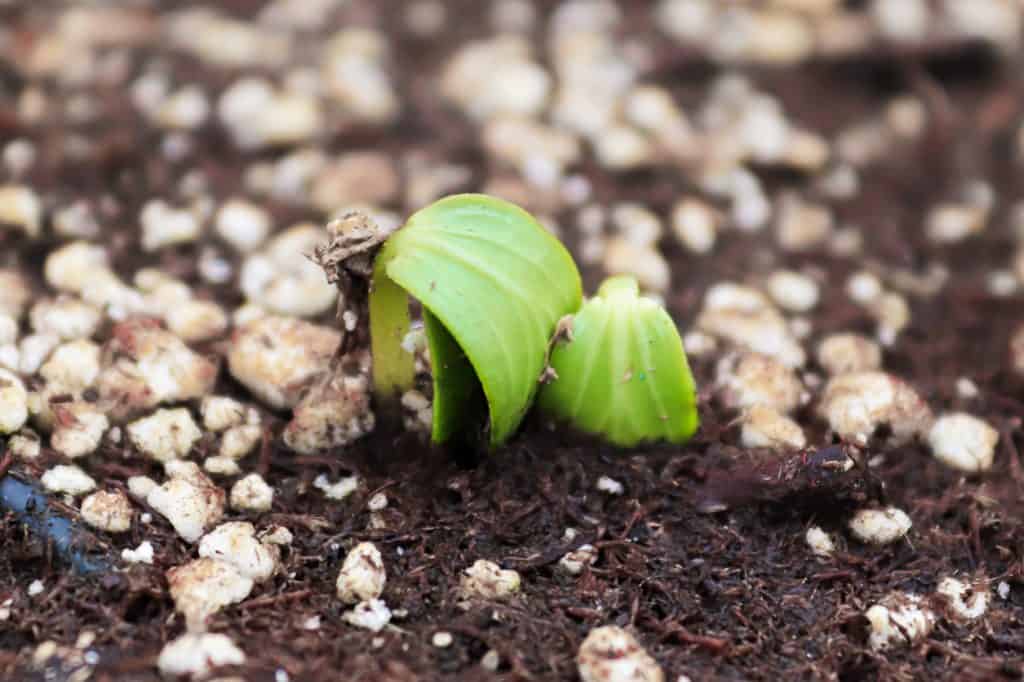
Pros
- A big advantage of using perlite as a growing medium is that it is extremely porous and lightweight, which means that it helps to improve drainage. Once again, it’s most often mixed in with soil, and can be very beneficial for water control on this front.
- Because perlite is so porous, it also allows for great aeration and oxygenation of the root zone. This helps to prevent anaerobic conditions from occurring, it helps promote healthy root growth, and ultimately promotes the healthy absorption of nutrients by those roots. Allowing for a well developed root system simply allows the plant to grow much quicker and healthier.
- Perlite is also pH neutral, so won’t alter the pH level of your nutrient solution or your soil.
- This is also a very lightweight substance, which means that it’s just easy to work with, and it works well for indoor potting mixes.
- Perlite is also ideal for allowing your growing medium, which is usually soil, to remain well structured and aerated. This is because it is resistant to compaction.
- Perlite also helps to reduce soil density when mixed in with soil, therefore allowing more breathability for the roots.
Cons
- A big downside of using perlite that you need to consider is that on its own it does not retain water very well. This is why you need to mix it in with soil, and you cannot use it on its own.
- Because perlite has such excellent drainage capabilities, it is susceptible to washing away other nutrients. In some cases, if you use too much perlite, it may lead to nutrient deficiencies.
- Because perlite doesn’t hold on to water very well, or to nutrients, it may mean that you need to provide your cannabis plants with increased levels of nutrients and watering compared to if you did not use any perlite.
- In some cases, if you are not careful, fine particles of perlite can become airborne while you are handling it. This may lead to respiratory irritation. On that note, perlite doesn’t look that nice either.
- Something important to consider is that perlite is a mineral that is mined, which means that its production can have some pretty serious and negative environmental consequences.
- To reduce dust and improve handling, you need to wet the perlite before using it.
Vermiculite
Something else you may consider using is vermiculite, which is a natural mineral. Vermiculite is often mixed in with the soil to help improve aeration and water retention.
It’s an ideal substance to mix in with soil because it helps improve soil structure and helps prevent soil from becoming too compacted.
Because it can retain water, it’s also a great way to slowly release water to your plants without under or overwatering them.
Let’s take a look at some of the reasons why you might want to or not want to use vermiculite.
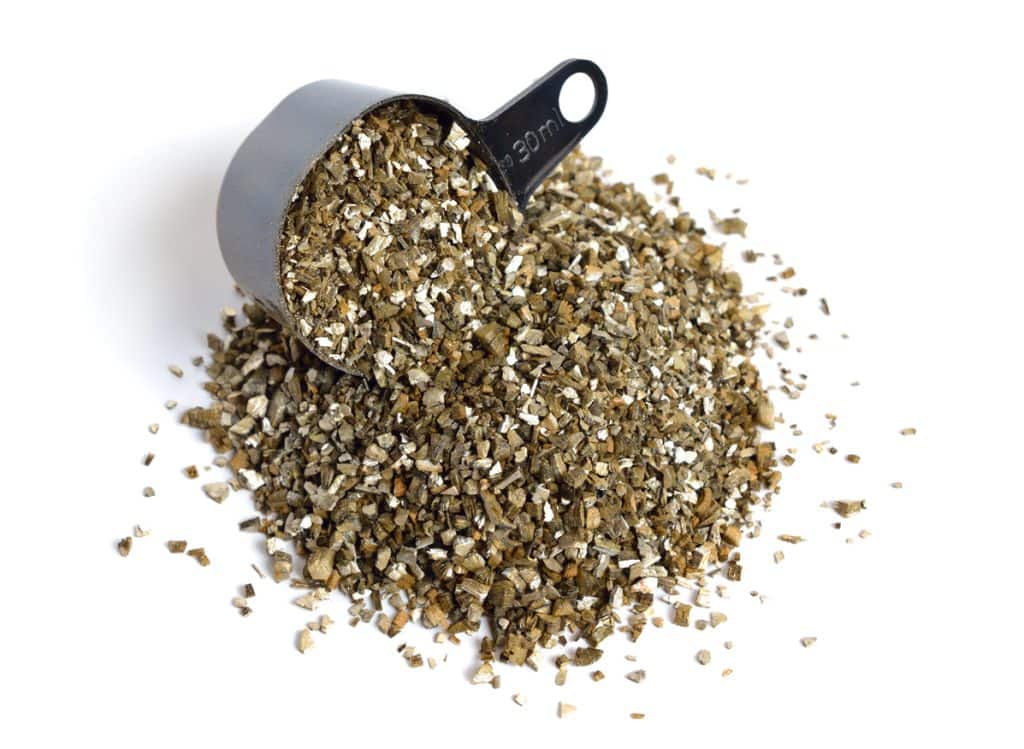
Pros
- One of the biggest benefits of using vermiculite as a growing medium is that it allows for excellent water retention. This helps the soil maintain moisture, and allows you to reduce the frequency of watering.
- You may also like using vermiculite because although it does retain water very well, it is still somewhat porous, and therefore allows for great aeration in the root zone. This therefore helps prevent waterlogged roots from occurring, and promotes healthy root growth in general.
- Vermiculite is also pH neutral, so it won’t affect the pH level of your nutrient solutions or soil.
- What is also about ideal about vermiculite is that it is able to hold on to nutrients in any growing medium, whether soil or otherwise. This therefore helps reduce the risk of nutrient leaching and nutrients washing away, therefore helping to maintain a balanced nutrient profile for your cannabis.
- The other benefit of vermiculite is that it is also very easy to handle and lightweight.
Cons
- Because vermiculite holds onto water so well, it has limited drainage capabilities. If you use too much of it, it may retain too much water, and lead to waterlogged roots.
- Keep in mind that vermiculite is not something that you can use on its own as a growing medium, because while it can retain some nutrients, it does not contain enough of them to feed a cannabis plant. Therefore, you must mix this substance in with soil, or you’ll have to supplement nutrients to a very high degree
- Vermiculite can also compact over time, which will ultimately reduce its aeration capabilities.
- Just like perlite, vermiculite needs to be mined, and this has environmental consequences. Also, like perlite, vermiculite produces dust that can lead to respiratory irritation.
- Vermiculite is also rather expensive.
Rockwool
Rockwool is a very special material that is made out of volcanic rock fibers. This is often used to either start seedlings for the germination process, and it is often used as a growing medium in hydroponic growing operations.
Something that stands out about rockwool is that it can be shaped into slabs or cubes to help support cannabis seedlings and cuttings alike. Let’s figure out what makes rockwool a good option, and why you might want to stay away from it.
Pros
- Rockwool makes for a fantastic medium to use in hydroponics systems because it can efficiently hold on to the plant roots and the nutrient solutions.
- Even when not used as a hydroponic medium, for instance when mixed with soil, it can still create a good medium mix that allows for great nutrient and water retention, while also allowing for sufficient drainage, which helps to maintain a proper root system.
- This is a growing medium that features a neutral pH level, therefore making it quite easy to work with.
- This is also a great growing medium to consider because it is very porous in nature, which means that it provides excellent aeration to the root zone of your cannabis plants, therefore also allowing for the healthy development of a root system.
- Rockwool is also a totally inert substrate that is free from pests, weed seeds, pathogens, fungus, and more. It’s actually one of the safer substances to use on this front.
- What is also a deal about this medium is that it is reusable and can be used for repeat grow cycles.
- This is a medium that can be cut into slabs, blocks, cubes, and anything in between, therefore making it ideal for a variety of purposes.
Cons
- This substance can be irritating to the skin and the respiratory tracts, so it is recommended to wear protection when handling it.
- When you first purchase this medium, you have to wash it and soak it thoroughly to make the pH neutral.
- One of the biggest drawbacks is that this medium tends to absorb calcium from your nutrient solutions, which in some cases can lead to calcium deficiencies. This most often means that you need to supplement with additional calcium.
- The production of this growing medium uses a lot of energy and produces a lot of emissions, which has negative environmental impacts. On that note, this substance is also not biodegradable.
- Rockwool can compact overtime, which means that eventually, the drainage capabilities will be negatively affected.
Expanded Clay Pebbles
We then have expanded clay pebbles, otherwise known as hydroton. These are very small clay pellets that are lightweight in nature and designed to provide excellent drainage. These are most often used in hydroponics systems, although some people may also choose to mix them in with their soil.
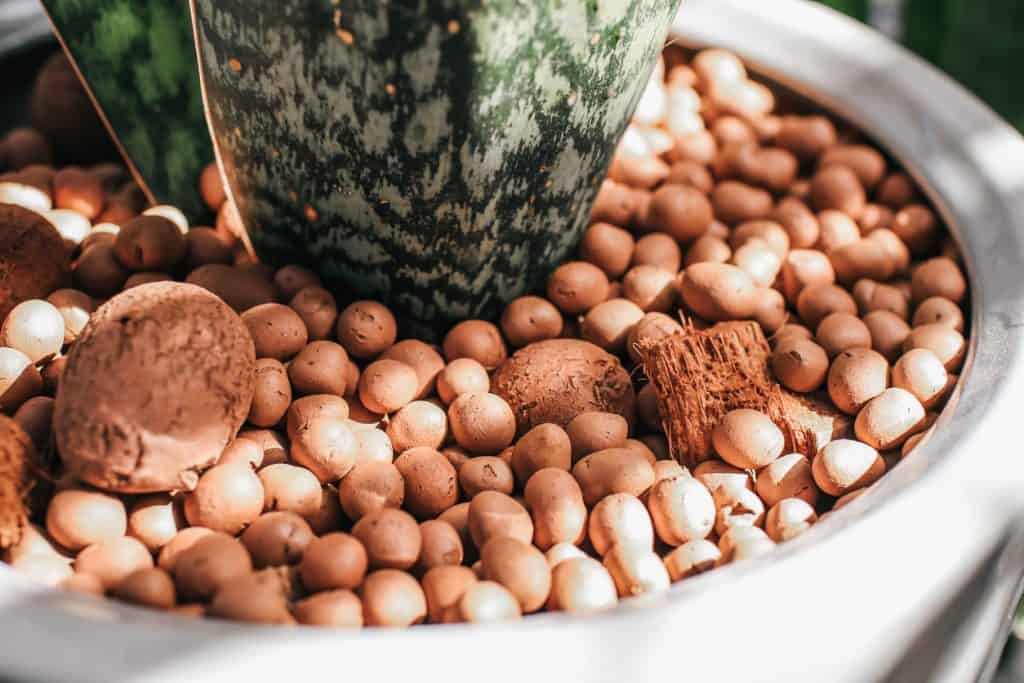
Pros
- Using expanded clay pellets is ideal because they have great drainage capabilities, which therefore help to reduce the risk of root rot and waterlogged roots.
- This growing medium is very porous, which means that it helps to provide ample amounts of oxygen to the root zone, something else that helps to support healthy root growth.
- Clay pebbles are totally free from pests, pathogens, fungi, and are also totally inert. This provides A sterile environment for the plant roots to grow in. They also have a totally neutral pH level, so they won’t affect the pH of your growing medium.
- These expanded clay pebbles are also extremely lightweight, which makes them ideal for a variety of hydroponics systems, and also makes them easy to handle. They are also ideal for hydroponic systems because they do not float.
- If properly cleaned and sterilized, these clay pebbles can also be reused for repeat growth cycles for many plants.
Cons
- A big drawback of using expanded clay pebbles is that they don’t really retain water, so if they are mixed in with your soil, you may need to engage in increased watering frequency.
- Clay pebbles don’t contain many nutrients on their own, and they also can’t hold on to many nutrients, which means that you’ll need to supplement your cannabis plants with plenty of additional nutrients.
- It even goes so far that clay pebbles actually absorb some calcium from your nutrient solution, which in some cases can lead to nutrient deficiencies. You may therefore need to supplement additional calcium.
- Although these clay pebbles are reusable, they require very thorough sterilization and cleaning if you plan on using them over and over again.
- Producing clay pebbles requires a lot of energy, and also produces a lot of emissions, which is not good for the environment.
- This is also one of the more expensive growing mediums available.
Aeroponics
Although may sound odd to say, using air as a primary growing medium for plant roots is a thing, and it is known as aeroponics. This is when the roots of the cannabis plant are suspended in the air, with a mist of nutrient solution being sprayed directly onto them on a regular basis.
This allows for the roots to be exposed to maximum oxygen levels, often leading to increased nutrient uptake and rapid growth. Let’s figure out why or why aeroponics makes for a good growing medium.
Pros
- A great benefit of using aeroponics for plant growth is that it provides the roots with a highly oxygenated environment that allows for robust and rapid root growth. This also allows for great nutrient uptake, and ultimately for faster development of the plant. On that note, because the roots are exposed, it’s also really easy to examine them.
- When compared to other hydroponics methods, aeroponics uses minimal water, which makes it very efficient. This method delivers the nutrients directly to the roots.
- The faster growth of the plants also tends to lead to much higher yields, therefore making this method extremely efficient in terms of your initial investment.
- This type of growing medium is also very unlikely to harbor pests, pathogens, or fungi, since there is nowhere for them to really evolve. This ultimately reduces the risk of infections and diseases from taking hold.
- Many people also like this type of setup because it allows for vertical farming, therefore making it very space efficient.
Cons
- One of the biggest issues with this type of setup or growing medium is that it is very technically complex. You need to have great control over the misting schedule, environmental conditions, and nutrient concentrations. Furthermore, the maintenance intensity here is also very high, as it requires a lot of work.
- What you also need to realize is that this type of system or growing medium is dependent on power. If you don’t have electricity, you’ll run into problems.
- There is also a very limited margin for error when it comes to aeroponic cannabis growth. Even the smallest of mistakes can have huge impacts on the health of your plants.
- One of the issues you will also be faced here is that if you don’t miss the routes regularly, they are susceptible to drying out, which can spell disaster for your plans.
**Hydroponics vs Soil
Before we wrap things up for the day, we also want to do a quick comparison of growing marijuana hydroponically versus using a more traditional soil-based method.
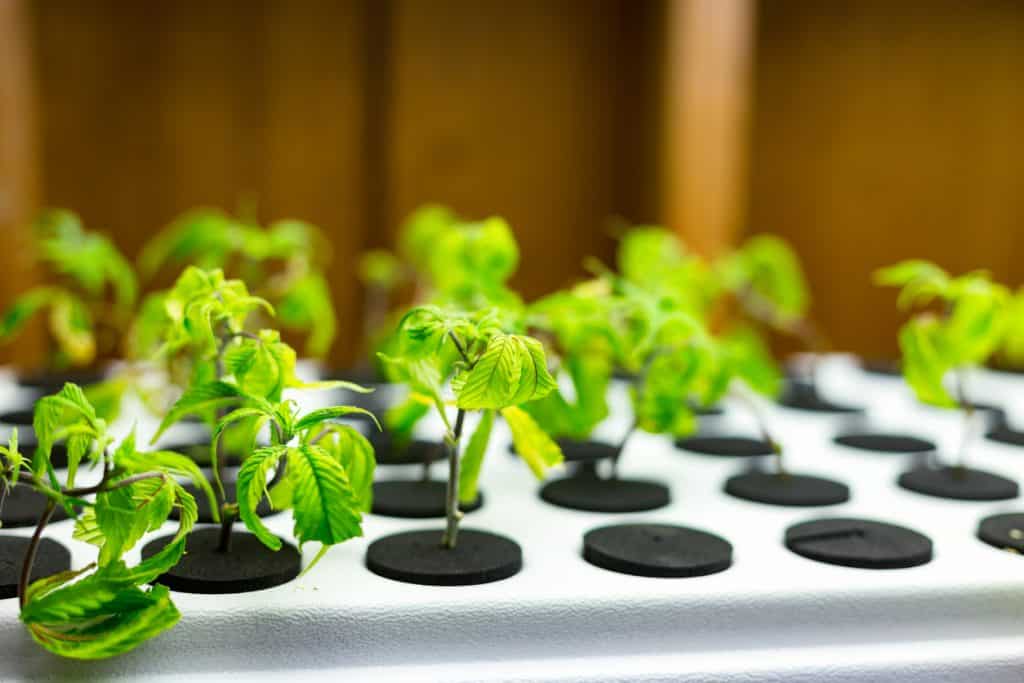
- Although soil does contain more nutrients than hydroponics systems, it is harder to control just how much nutrients your plant gets. Hydroponics systems allow for precise nutrient delivery and control. This may result in faster growth and higher yields when soilless mediums are involved.
- With soil, plants require more water, and overwatering can be a big issue. However, as far as water efficiency is concerned, hydroponic systems tend to be much more efficient.
- Soil provides plants with a very natural medium for roots, but there are also problems that can occur. Hydroponic systems on the other hand generally provide more oxygen to the roots, which can reduce the risk of diseases and issues from occurring.
- Soil is a great medium to consider because it acts as a buffer for pH changes, so pH changes won’t have as huge an impact on your plants. With hydroponics systems on the other hand, pH maintenance and monitoring is essential, and also somewhat difficult. pH and nutrient levels can be hard to control with something like a deep water culture.
- Cultivating cannabis in soil tends to be very cost effective and doesn’t have a massive environmental impact, whereas hydroponics systems can be extremely expensive and take a toll on the environment. Soil is just easier to use in general.
- Most people also say that cannabis grown in soil has a much better flavor and aroma than cannabis grown in a hydroponic grow mediums.
- If growing in soil, remember that adding some peat moss to the mix can also be beneficial. Peat moss helps in many regards and makes for an all around solid growing medium.
Conclusion
The bottom line here is that there are many different growing mediums that you can use to grow indoor cannabis, and which one you choose will affect the overall result. Personally, we recommend using the best of the best.
At the very least, soil mixed with perlite and vermiculite is recommended. There are many commercial soils that growers prefer, all of which may qualify as the best medium depending on what exactly your needs are.

